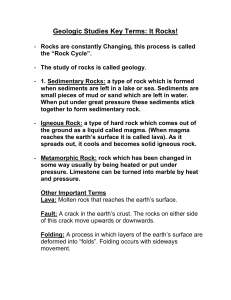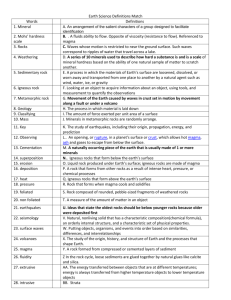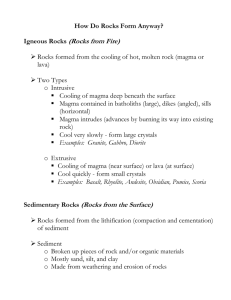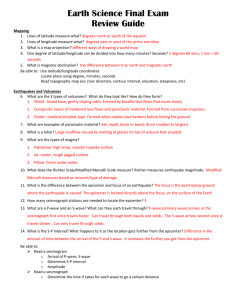Notes
advertisement
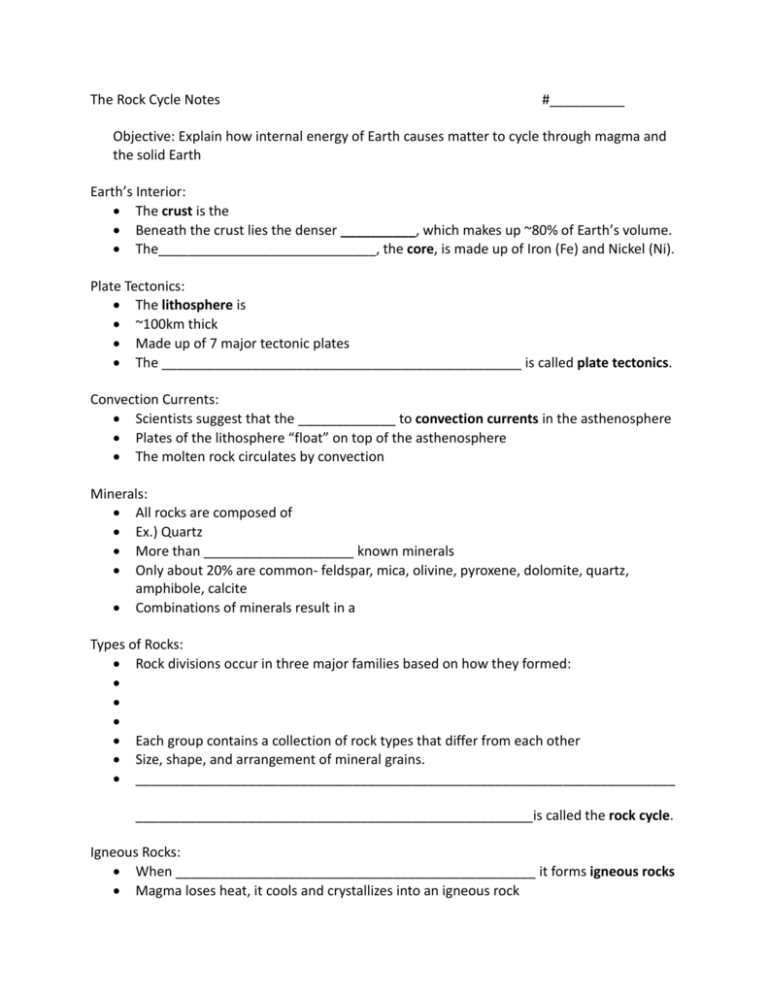
The Rock Cycle Notes #__________ Objective: Explain how internal energy of Earth causes matter to cycle through magma and the solid Earth Earth’s Interior: The crust is the Beneath the crust lies the denser __________, which makes up ~80% of Earth’s volume. The_____________________________, the core, is made up of Iron (Fe) and Nickel (Ni). Plate Tectonics: The lithosphere is ~100km thick Made up of 7 major tectonic plates The ________________________________________________ is called plate tectonics. Convection Currents: Scientists suggest that the _____________ to convection currents in the asthenosphere Plates of the lithosphere “float” on top of the asthenosphere The molten rock circulates by convection Minerals: All rocks are composed of Ex.) Quartz More than ____________________ known minerals Only about 20% are common- feldspar, mica, olivine, pyroxene, dolomite, quartz, amphibole, calcite Combinations of minerals result in a Types of Rocks: Rock divisions occur in three major families based on how they formed: Each group contains a collection of rock types that differ from each other Size, shape, and arrangement of mineral grains. ________________________________________________________________________ _____________________________________________________is called the rock cycle. Igneous Rocks: When ________________________________________________ it forms igneous rocks Magma loses heat, it cools and crystallizes into an igneous rock The faster he cooling time the Intrusive (Earth’s ________________________) Extrusive (Earth’s ________________________) Weathering: _____________________________________________________ is called weathering Physical Chemical Erosion is the process in which Sedimentary Rocks: _________________________________________________they form sedimentary rock Layers of sediment can be compressed from the weight above them Minerals dissolved in water seep between bits of sediment and “glue” them together Metamorphic Rocks: Any rock can become a metamorphic rock, Rocks are buried deep in the Earth at high temperatures and pressures, they form new minerals and textures all without melting If melting occurs, magma is formed, starting the rock cycle all over again.








